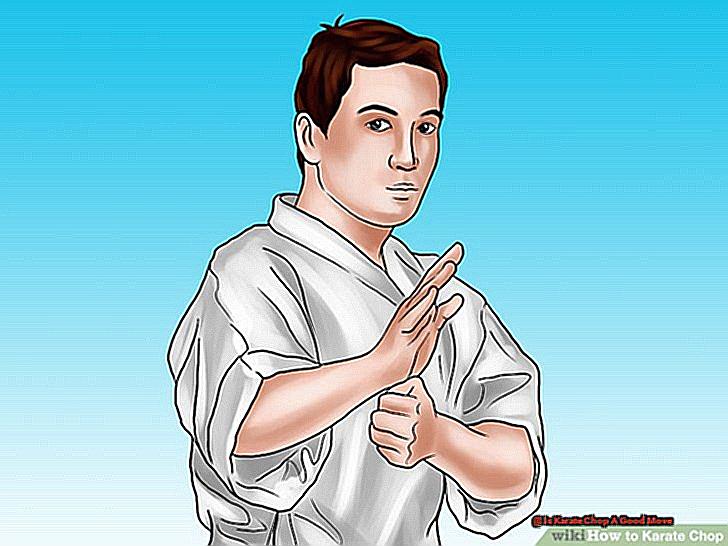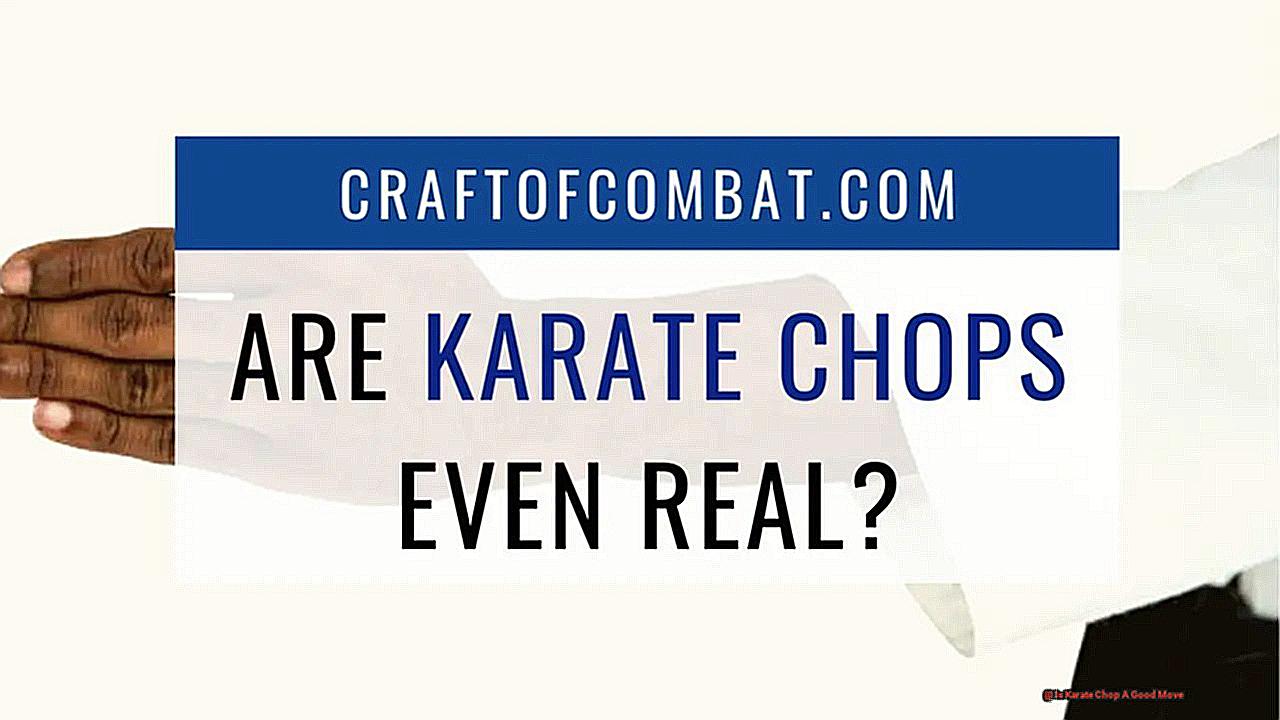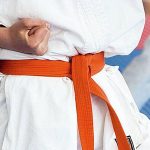Are you seeking a formidable self-defense technique that can safeguard you in any scenario? Look no further than the karate chop. This legendary move, popularized by action flicks and martial arts masters, is not just for show. In reality, it is a highly effective tactic that can aid you in fending off attackers and boost your confidence in your own safety. Don’t just take our word for it – here are the key reasons why the karate chop is a must-have in your self-defense arsenal:
- The karate chop targets critical pressure points on the body, making it a swift and efficient way to disable an assailant.
- It requires minimal physical strength, making it accessible to individuals of all ages and abilities.
- With proper training and dedication, the karate chop can be executed with lightning speed and precision.
- It can be utilized as both a defensive and offensive move, giving you an advantage in any confrontation.
- The karate chop is not limited to hand strikes – other body parts like the foot or elbow can also deliver powerful blows.
So why hesitate? Incorporate this potent move into your self-defense repertoire today and feel empowered in any situation.
What Is A Karate Chop?
A Karate Chop, also known as a Knifehand Strike, is a technique utilized in various martial arts, such as Karate, Taekwondo, and Hapkido. This strike involves using the side of your hand to target an opponent’s body with the part between the base of your little finger and the beginning of your wrist. It is typically aimed at pressure points or sensitive areas of the body to incapacitate an attacker.
Proper execution and practice are vital for maximum effectiveness when performing a Karate Chop. The key is to strike with speed, accuracy, and force. When executed with precision, a Karate Chop can be a dominating and efficient attack that can render someone unconscious. However, one must exercise caution while using this technique as it can result in severe injuries.
In martial arts, Karate Chops are often used as a diversion or surprise attack in hazardous situations. They can target vulnerable areas of an opponent’s body, such as the neck or temple. While legal in MMA competitions, there are restrictions on where they can be used.
The effectiveness of a Karate Chop versus a punch depends on the situation and personal preference. Some may argue that a punch has more force behind it, but a well-executed Karate Chop can also have a significant impact on an opponent.
In conclusion, a Karate Chop is a versatile and potent technique utilized in various martial arts for self-defense and combat. It requires proper training and technique to execute correctly and can serve as both a distraction and powerful strike in dangerous situations.
Do Karate Chops Hurt?
When it comes to pain, the intensity of a karate chop can vary depending on the strength and technique of the person delivering it. However, it is safe to say that a well-executed karate chop can cause significant discomfort and agony to the recipient.
The level of pain experienced also depends on where the chop lands and how much force is behind it. For instance, a chop to the neck or throat area can be excruciating and potentially cause severe harm, while a chop to the chest or abdomen may be less painful but still result in discomfort.
Furthermore, karate chops can also inflict intense pain when applied to pressure points. These are specific areas of the body that, when targeted with sufficient force, can cause immense agony and even temporary paralysis. Some common pressure points for karate chops include the temple, jawline, and solar plexus.
To give you an idea of the pain level, imagine being hit with a wooden club or punched with a closed fist. A karate chop falls somewhere in between these two in terms of pain intensity, making it a formidable attack when executed correctly.
In addition to physical suffering, a karate chop can also cause disorientation and unconsciousness if applied to pressure points with significant force. This makes it an effective technique for self-defense situations where the goal is to quickly subdue an attacker.
| Body Part | Pain Level (on a scale of 1-10) | Effectiveness |
| Neck/Throat | 8-10 | High |
| Chest/Abdomen | 6-8 | Moderate |
| Pressure Points | 9-10 | High |
Overall, a karate chop is a powerful and potentially painful technique that should only be used in self-defense situations or under the guidance of a trained martial arts instructor. It requires precision, control, and an understanding of pressure points to be effective and avoid causing serious injury. So, while it may not be the most forceful strike, a karate chop can still pack a punch and should not be underestimated.
Karate chops have always been a fascinating aspect of martial arts for me. As a child, I remember being in awe as I watched my older brother practice his karate moves in our backyard. His precise movements and powerful strikes left me both scared and fascinated at the same time.
Years later, I finally had the opportunity to learn karate myself. And one of the first techniques we were taught was the infamous karate chop. Our sensei emphasized the importance of controlling our strength and being mindful of where we targeted our strikes.
How Much Damage Does a Karate Chop Do?
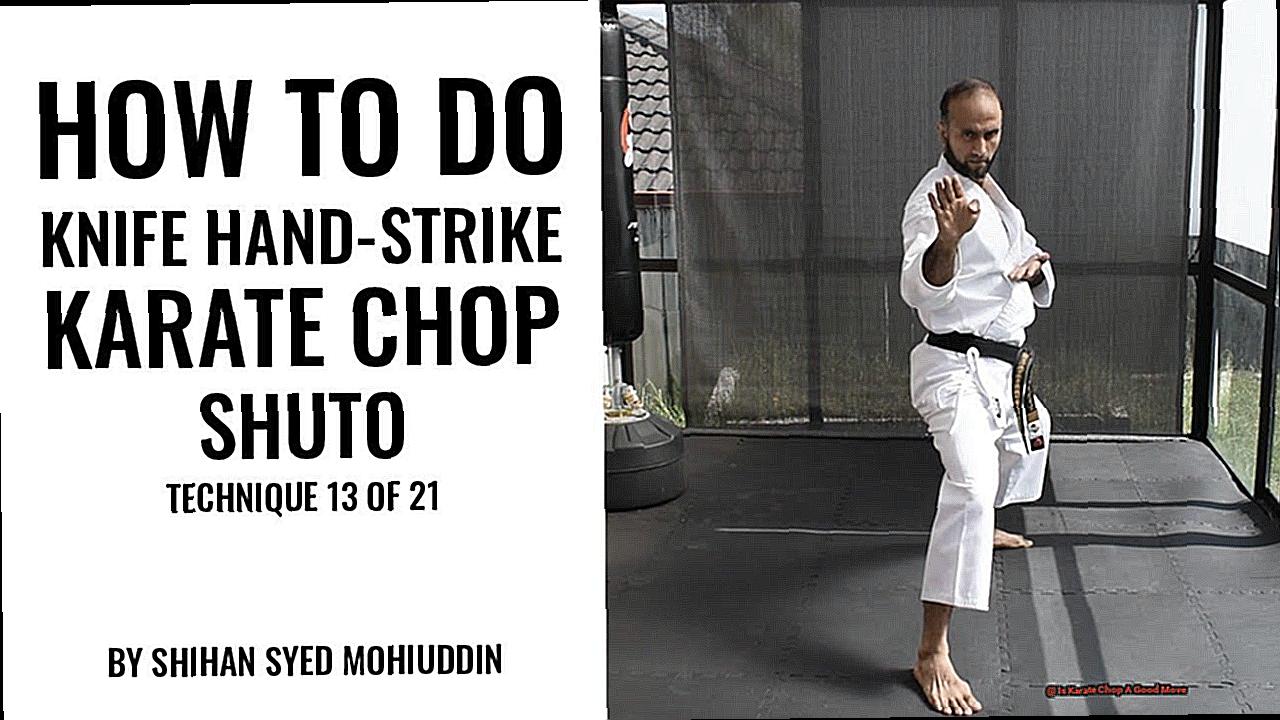
The force of a karate chop varies based on the strength and technique of the individual. According to a study by the University of California, Davis, the maximum force that can be generated by a karate chop is approximately 3,000 newtons (N) or 674 pounds-force (lbf). This amount of force is powerful enough to break through a one-inch thick wooden board.
However, the potential impact of a karate chop also depends on several other factors, including the type and thickness of the material being struck, as well as the angle and accuracy of the chop. For instance, a chop directed at a soft target such as the neck or stomach can cause significant damage and may even result in internal injuries. On the other hand, a chop aimed at a harder surface, like bone, may not cause much harm.
To better understand the potential damage caused by a karate chop, let’s compare common materials and their strength to withstand force:
Material | Strength to withstand force
— | —
Wood (1 inch thick) | 3,000 N or 674 lbf
Bone | 10,000 N or 2,248 lbf
Concrete (1 inch thick) | 20,000 N or 4,496 lbf
As illustrated in the above table, a karate chop can generate enough force to break through wood but may not have a significant impact on harder materials such as bone or concrete.
Moreover, it’s essential to note that while karate chops are often used for striking and breaking objects, they can also serve defensive purposes in martial arts competitions. In these situations, the goal is not necessarily to cause damage but rather to block or deflect an opponent’s attack. Therefore, in these scenarios, the amount of force behind a karate chop may be reduced to avoid causing harm.
Why Use A Karate Chop?
A karate chop is a popular martial arts technique with several benefits, making it a top choice among many karate practitioners. These key advantages include:
- Reduced risk of injury: Unlike a punch, which can cause severe damage to the knuckles if not properly protected, a karate chop uses the side of the hand, which is less susceptible to injury. This decreases the chances of harm while still delivering a powerful strike.
- Versatility: A karate chop allows for greater flexibility in reaching different angles and targets that may not be accessible with a punch. For instance, targeting the side of the neck or behind the ear can prove highly effective in taking down an opponent.
- Distraction technique: The karate chop can also serve as a distraction technique to set up other strikes or create an opening for a takedown or throw.
- Strengthens hands and muscles: Regularly practicing karate chops can help strengthen the hands and muscles involved in the technique, making them more potent and efficient over time.
- No dependence on gloves: In martial arts competitions, bulky gloves may be used, limiting the effectiveness of punches. However, a karate chop does not require gloves, making it a viable option for striking in such situations.
Mastering the art of the karate chop provides numerous benefits and is an essential technique in the practice of karate.
How Do You Give Someone A Karate Chop?
When it comes to delivering a karate chop, there are several crucial techniques and steps that one must follow to ensure its effectiveness and safety. These include preparation, proper form and technique, and consistent practice.
Preparation:
Before attempting a karate chop, it is vital to prepare oneself mentally and physically. This involves maintaining a calm and focused mindset, as well as ensuring that the necessary materials are available for practice. It is recommended to start with thinner and smoother boards, such as thin pine boards, rather than thicker or harder materials.
Proper Form and Technique:
To successfully execute a karate chop, one must have the correct form and technique. Begin by standing in a stable position with your right leg back and your left leg forward, while keeping your hands in the guard position. As you strike, firmly plant your back leg on the ground to generate kinetic energy. Allow this energy to travel through your hips, up your torso, and exerted through an open-handed strike. Remember to keep your arms straight and wrists firm for maximum power.
Practice:
As with any martial arts technique, consistent practice is essential to master the karate chop. Start slow and gradually increase speed and power as confidence and comfort with the movement grows. It is also important to practice at various angles and heights to make the karate chop more versatile.
Executing a karate chop effectively and safely requires thorough preparation, proper form, and continuous practice.
Is Karate Chop Better Than Counter?
When it comes to karate, there are two main moves that can prove to be equally effective in a match: the karate chop and the counter move. Which one is better depends on several factors, such as the situation and the fighter’s level of skill. A perfectly executed karate chop can deal devastating damage to an opponent’s vital areas, while a counter move allows the fighter to anticipate their opponent’s movements and use their energy against them. In the end, it all boils down to personal preference, training, and execution.
In the world of martial arts, there is an ongoing debate about which move reigns supreme: the karate chop or the counter move? Both have their own unique strengths and advantages, making it challenging to determine which one is better. However, one thing is for sure – a skilled practitioner of either move can easily overpower their opponent.
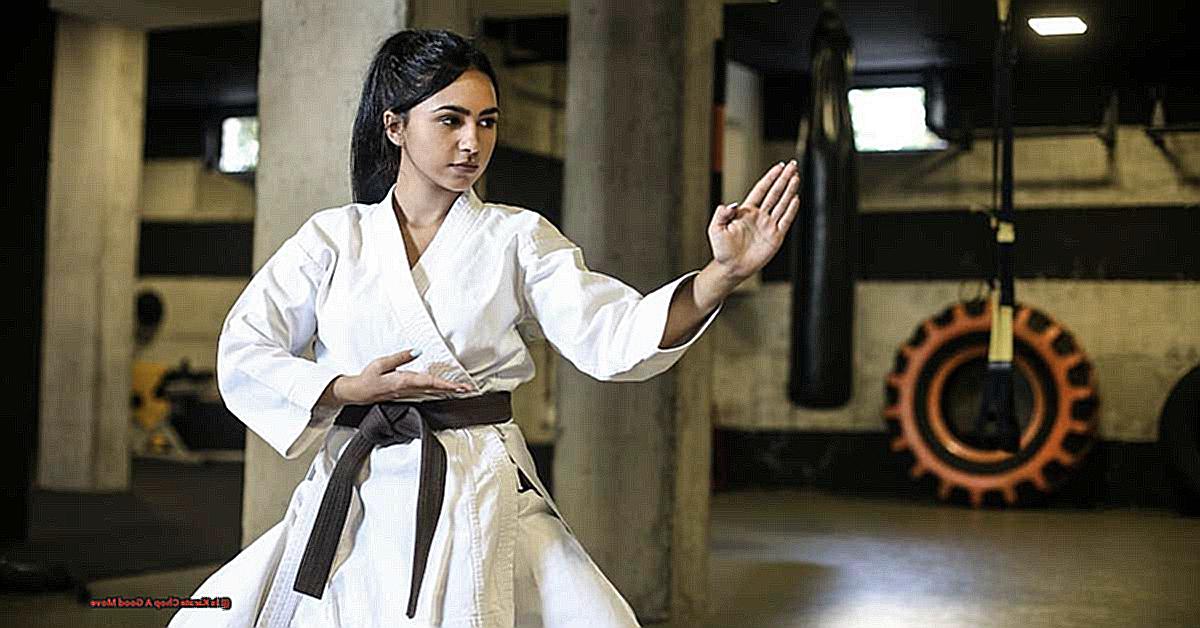
For traditional karate practitioners, the karate chop is a staple move that requires precision and force. It involves striking an opponent with a flat hand or palm, targeting vital areas such as the neck, throat, or temple. A well-executed karate chop can cause immense pain and even knock out an opponent.
On the other hand, the counter move relies on using an opponent’s energy against them. This move requires quick reflexes and anticipation, as it involves deflecting an incoming attack and using that momentum to launch a counterattack. It requires a high level of skill and training but can be extremely effective in taking down opponents.
Ultimately, whether a fighter chooses to rely on the power of a karate chop or the cunningness of a counter move depends on their personal preference and training. Both moves have their own merits and can be equally effective in certain situations.
Are Karate Chops Effective in A Fight?
The question of whether karate chops are an effective fighting technique is a common one. The answer is not a simple one, as it involves understanding the complexities involved in executing a successful chop.
First and foremost, it is important to note that karate chops require proper training, form, and execution in order to be effective. This means that simply attempting to strike with the hand will not yield the desired results. Instead, one must practice and train in order to master this technique.
One of the main strengths of a karate chop is its versatility. Unlike a standard punch, a chop can be delivered from any angle and position. This makes it a useful technique in various situations, such as when an opponent is close or when you are in a tight space. Additionally, because of the way a chop is executed, it creates less wind resistance and allows for fluent motion, making it easier to move in and out of the strike.
However, like any fighting technique, there are also limitations to karate chops. One of the main limitations is that they require proper training to avoid hand injuries. This means that one must practice proper form and technique to avoid injury and maximize impact. Incorporating body movement and proper breathing techniques can also help increase the power of a chop.
Another limitation of karate chops is that they may not be as effective against certain types of opponents, such as those with strong defense techniques. In these cases, it is important to learn to read your opponent’s movements and use the chop at the right moment for maximum impact.
Is a Karate Chop More Effective than A Punch?
When it comes to effectiveness, it’s not about which technique reigns supreme, but rather how and when to utilize them. Each technique, the karate chop and the punch, has its own unique strengths and limitations, and their effectiveness ultimately depends on the situation and the practitioner’s level of skill.
Karate chops are renowned for their ability to deliver swift and powerful strikes with the side of the hand, making them ideal for close combat situations. They also offer greater versatility in terms of angles and targets, as they can strike areas that may be difficult to reach with a punch. Additionally, the hand used for a karate chop is less vulnerable than the knuckles used in a punch, reducing the risk of injury.
On the contrary, punches are known for their speed and force, making them effective for longer-range strikes. They also pack more power behind each strike due to the use of a larger knuckle area. However, punches can be limited in terms of angles and targets due to their linear motion.
When it comes to defense, karate chops can serve as a distraction or a setup move for other strikes, while punches are more commonly used for deflecting or blocking incoming attacks.
Ultimately, both techniques have their own strengths and weaknesses, and it is crucial for practitioners to train in both and use them strategically in combat.
Can a Karate Chop to the back of the neck really knock someone out?
In certain circumstances, a well-executed karate chop to the back of the neck can be a highly effective maneuver. However, it must not be used carelessly. Precise technique and caution are required to execute it safely and correctly.
First and foremost, it should be noted that a karate chop to the back of the neck should only be utilized as a last resort for self-defense or martial arts purposes. The ultimate goal of martial arts is not to harm others, but rather to protect oneself and those around us. As a result, this move should only be employed in situations where there is a genuine risk of harm or danger.
In terms of its efficacy, a karate chop to the back of the neck has the potential to render an individual unconscious if executed with sufficient force and accuracy. This is due to the delicate nature of the neck, which houses essential blood vessels and nerves that can be damaged by a powerful strike. Nevertheless, this technique should only be performed by experienced practitioners who have undergone extensive training in targeting and controlling their attacks.
Safety is also a major consideration when performing a karate chop to the back of the neck. If executed improperly or with excessive force, it can lead to serious injury or even death. Hence, it is imperative to receive proper training and approach this move with caution before attempting it.
Moreover, it is crucial to take into account the legal implications of using such a technique for self-defense. In some instances, it may be deemed excessive force and could result in legal consequences. Therefore, it is essential to have a thorough understanding of self-defense laws and regulations before utilizing any martial arts techniques.
In summary, while a karate chop to the back of the neck can potentially render an individual unconscious and be an effective means of self-defense or martial arts, it must only be used with great caution and in extreme situations.
Appropriate training, precision, and awareness of legal repercussions are all essential before executing this move.
| Advantages | Disadvantages |
|---|---|
| Highly effective in specific scenarios | Possible risk of serious injury or death if executed wrongly |
| Potential to incapacitate an opponent | Legal consequences |
| Useful for close-quarters combat and self-defense | Requires precise technique, skill, and caution to execute safely and correctly |
So, a karate chop to the back of the neck can be an effective and safe technique when used in self-defense or martial arts. However, it should only be considered as a last resort and performed with proper training and caution. This is not a move to be taken lightly, as it can have serious repercussions if executed incorrectly.
Are Karate Chops Legal in Mma?
In the world of MMA, or Mixed Martial Arts, a popular combat sport that combines striking and grappling techniques from various martial arts disciplines, safety is of utmost importance. Governed by the Unified Rules of Mixed Martial Arts, established in 2000 to promote fair competition and minimize risk for injury, it is regulated by organizations such as the Ultimate Fighting Championship (UFC).
When it comes to legal strikes in MMA, only punches, kicks, knees, and elbows to the head and body of a standing opponent are allowed. This ensures that strikes to sensitive areas such as the back of the head or spine are prohibited, as they can cause severe damage to the brain and spinal cord. Furthermore, open-handed strikes are only permitted to the head of a grounded opponent.
Unfortunately for fans of traditional martial arts such as Karate or Taekwondo, karate chops are not considered legal strikes in MMA fights. This striking technique, using the edge of the hand or palm to target sensitive areas like the neck, collarbone, or temple, poses a high risk for causing serious injury. In fact, a powerful chop to these areas can result in concussions, fractures, or even death.
While it may be an effective self-defense move, safety is paramount in MMA. This is why rigorous medical testing is required for fighters before each fight to ensure they are physically fit to compete. Additionally, referees and medical personnel are present during fights to ensure rules are followed and any injuries are promptly addressed.
Conclusion
In conclusion, the karate chop is an incredibly effective and versatile self-defense technique that should not be underestimated. Its ability to target critical pressure points on the body with minimal physical strength makes it a valuable asset in any confrontation. Whether used defensively or offensively, this move can quickly turn the tide in a dangerous situation. With dedication and proper training, individuals of all ages and abilities can master this powerful technique and incorporate it into their self-defense repertoire.
But don’t limit your thinking to just hand strikes – the karate chop can also be executed with other body parts such as the foot or elbow for even more devastating impact. This versatility makes it a valuable skill not only in self-defense but also in martial arts competitions, where it can be used for both striking and blocking.
Embrace the numerous benefits of the karate chop today and feel empowered in any situation. But remember to always exercise caution and seek guidance from trained professionals when learning this technique for maximum effectiveness. By incorporating the karate chop into your self-defense arsenal, you will become a force to be reckoned with.

